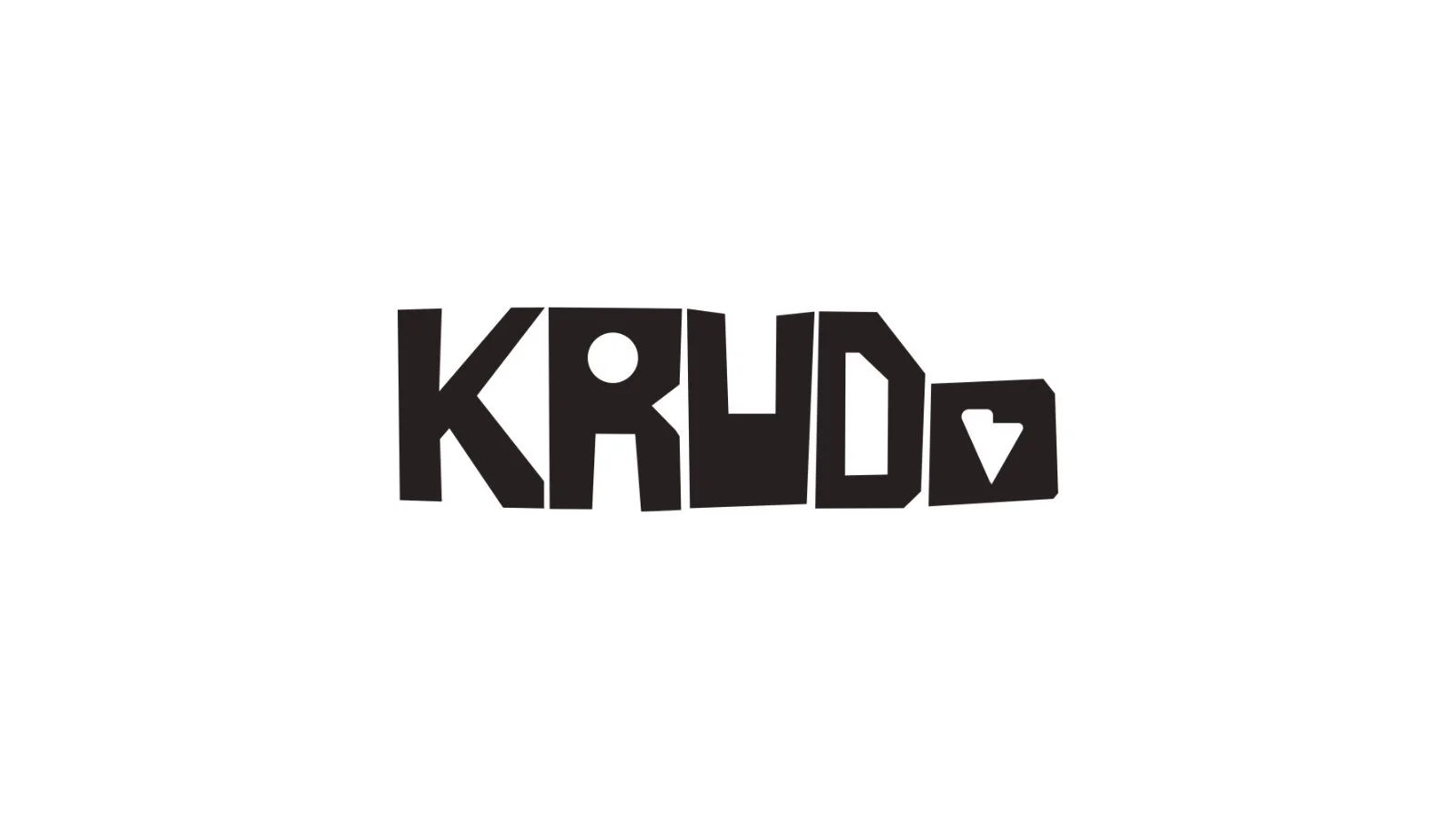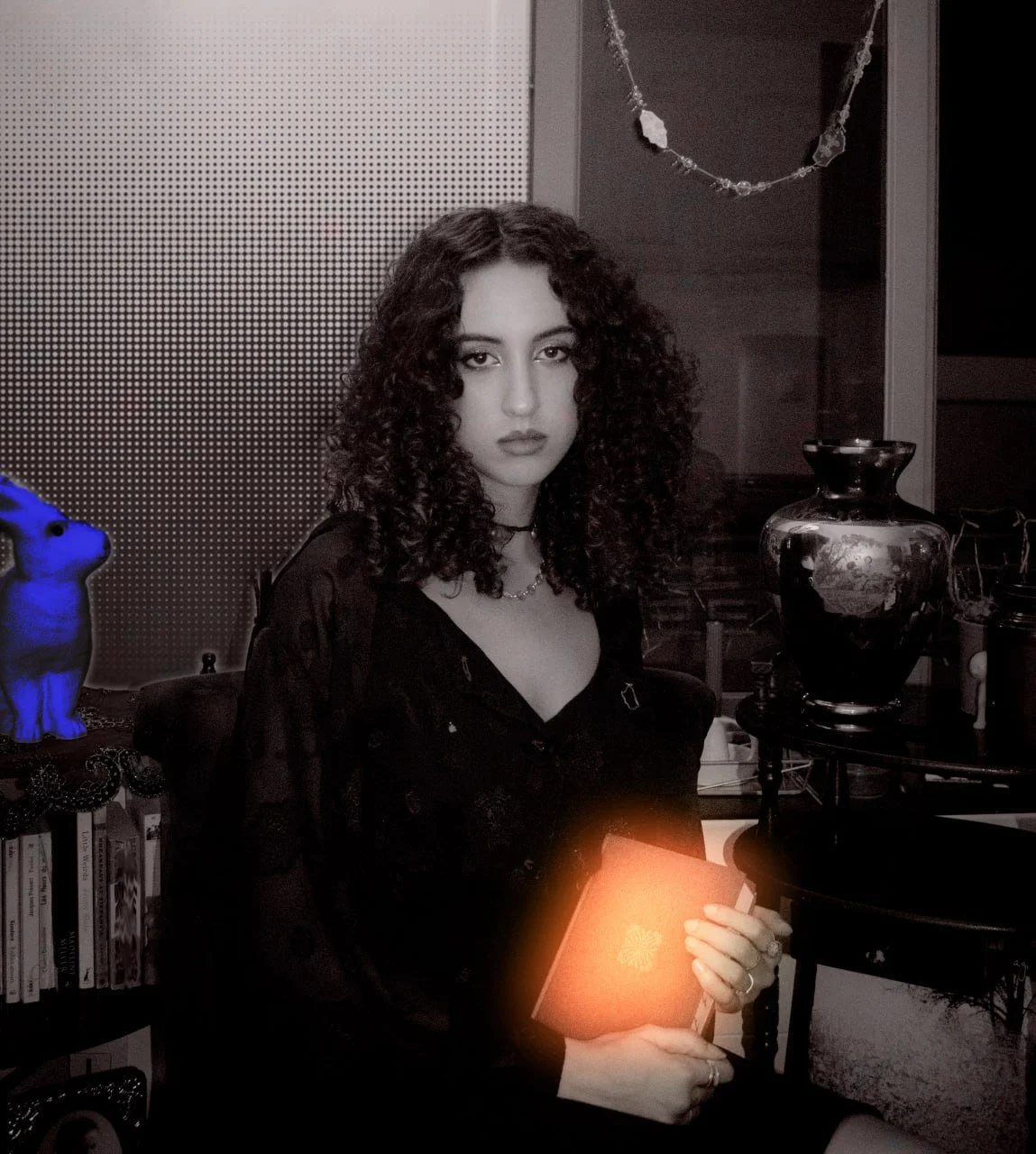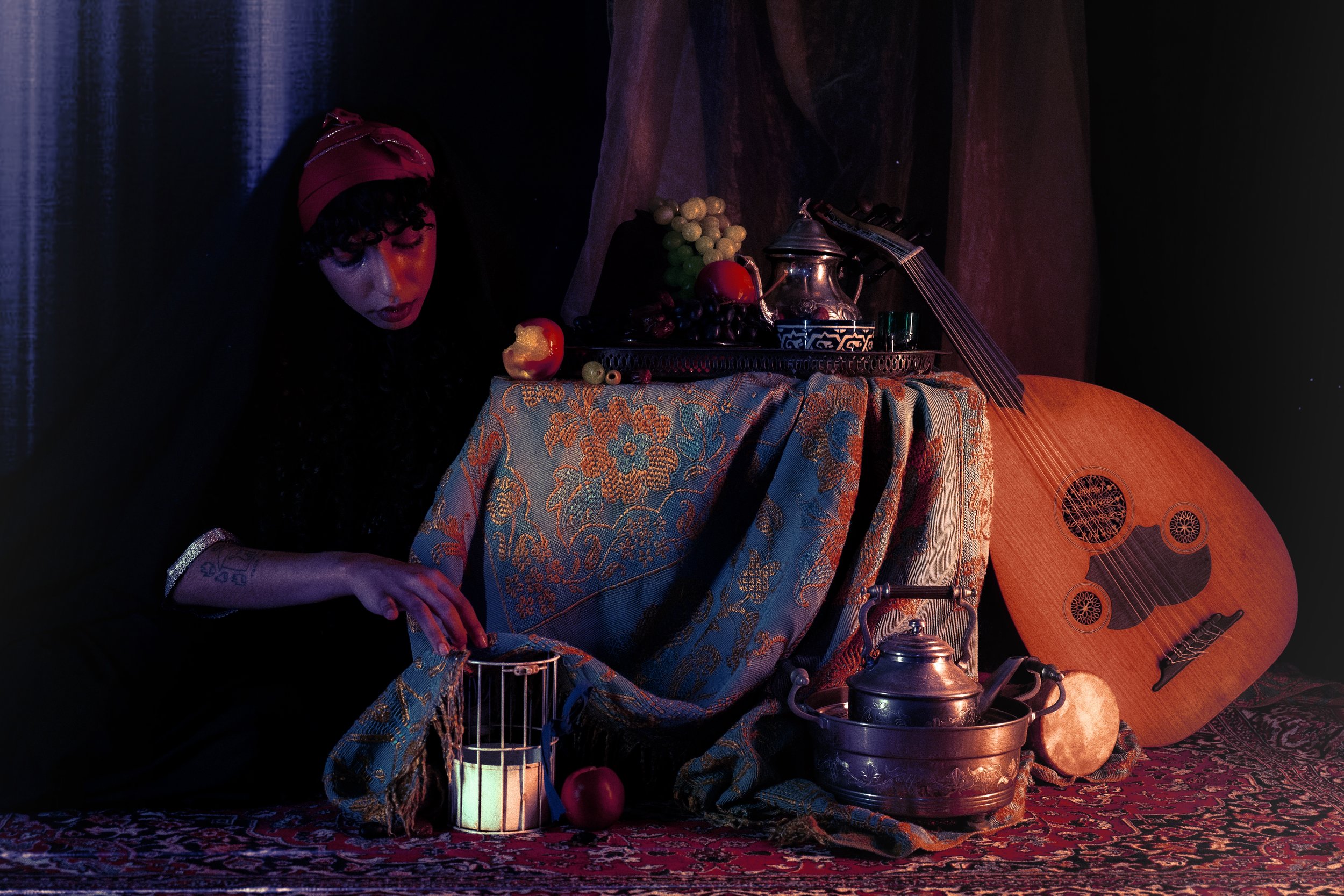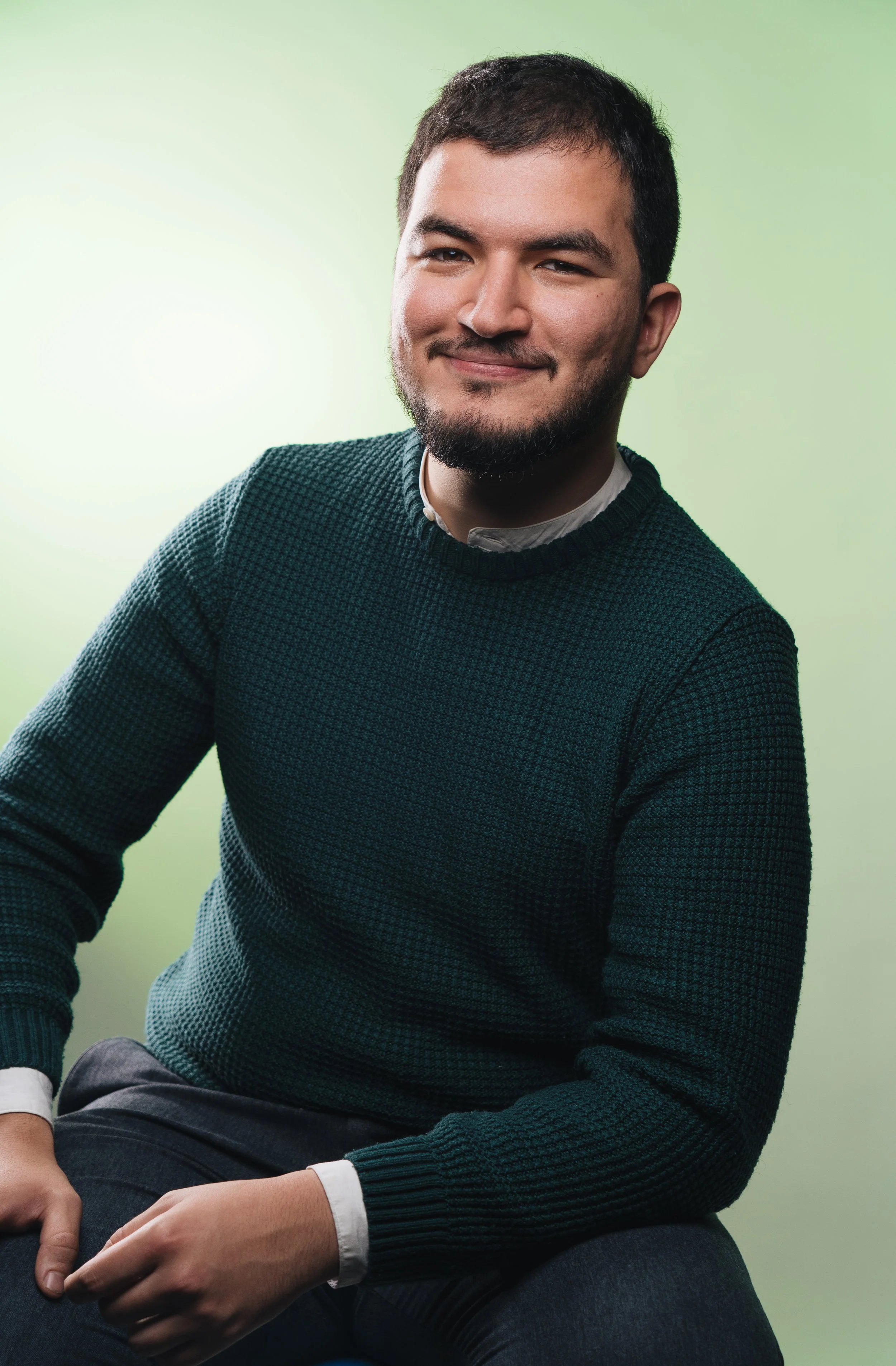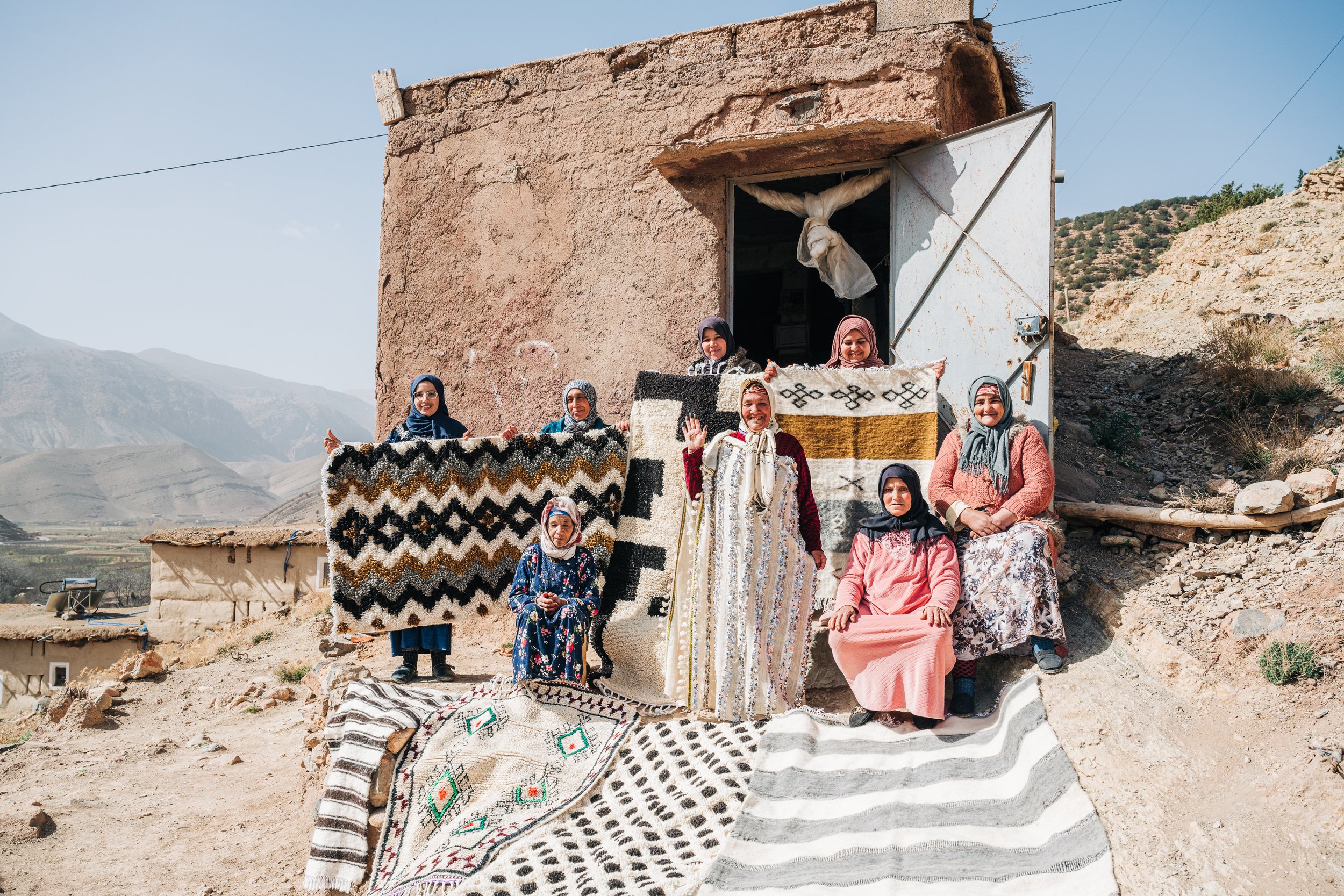The Culture Capturers: Morocco’s Young Artists Are Reshaping Cultural Identity
In studios, bedrooms, and galleries across Morocco and its diaspora in Europe, a new generation of artists are reclaiming what it means to be a Moroccan creative. Far from the Orientalist gaze that once romanticized and flattened their culture, these emerging visual artists, photographers, writers, and culture captures are confronting colonial memory, elevating Amazigh heritage, and bridging diasporic identities.
Their creative styles aren’t branded. They’re intimate, intentional, and deeply rooted in a desire to tell stories that have been silenced or distorted. Through digital media, photography, zines, and modeling, these young creatives are reshaping how Morocco sees itself, and how the world sees Morocco.
I spoke with several artists about the intersections of culture, politics, personal identity in their work, and how art is becoming a tool for both preservation and reinvention in a rapidly changing country.
Chaimae
For Chaimae, storytelling is a form of resistance and a space for reclamation. With a background in international relations and a focus on migration, gender, and justice, her entry into the creative world has been shaped by a desire to break free from the constraints of policy language. “It can be so restrictive,” she explains. “You have to cater to policymakers, you have to cater to donors, you have to write in very legal language…We always have to speak someone else's language, and we just wanted this space for young people like ourselves to speak freely.”
That frustration became fuel for something new. In February of this year, Chaimae and Kholoud, her co-founder, launched KRUDo Magazine, a growing free digital platform dedicated to spotlighting youth voices in art, culture, fashion, and politics across the globe. Based in France but not limited to the African diaspora, KRUDo was created as “a little thing for everybody,” where fashion and history sit beside essays on art, colonial legacy, and cultural erasure.
What makes KRUDo different is its refusal to perform identity; it doesn’t aim to simply showcase cultural aesthetics, but to create a space where diverse stories are told with complexity, contradiction, and care. “I don’t want this to be just another performative initiative,” Chaimae says. “It’s important for us to have values and uphold them.”
As a Moroccan living in France, Chaimae often finds herself navigating the uneasy space between personal and public representation. “Being abroad gives you space to think, restructure, and also get closer to yourself and your country. But at the same time, in people’s collective minds, you represent the entirety of your country,” she said.
Chaimae, like many others, faces the struggle between individuality and categorization: “When you act a certain way, you’re stripped of your individuality, and you become a symbol, so it's scary in that sense. You have to watch how you walk, how you talk, to make sure you don’t enforce stereotypes.”
Looking ahead, KRUDo Magazine is working on a third issue that will center Palestinian voices and ongoing colonial violence, as well as welcome submissions from allies who align with the magazine’s political and ethical stance.
When asked what advice she has for young Moroccan artists and creatives, especially in the diaspora, she returns to a lesson shaped by both the policy world and the creative one: patience. “Frustration comes as an unwritten rule. So if you do advocacy work you will not yield results immediately…” Chaimae said. “You have to learn that small actions matter.”
Krudo Magazine Logo
Ouiam
Ouiam, a 25-year-old Moroccan multidisciplinary artist based in France, is using photography and visual storytelling to archive, dream, and reclaim. Working primarily through surreal photo editing and poetic imagery, she documents her lived experience as an Amazigh artist shaped by cultural hybridity and a deep-rooted connection to Morocco. “Photography was once a way for me to visualize my memories,” she said. “It is now a way to visualize my dreams.”
Born in Nador and raised in Tangier, Ouiam—whose name means “harmony” in Arabic—has always used art as a way to navigate the world. She began writing at the age of 7 and picked up painting at 13, but it wasn’t until her father gifted her a camera in 2017 that she began to seriously experiment with photography. What started as simple documentation of loved ones and places transformed into an expansive, introspective practice exploring identity, home, and desire. “I’ve always been very creative,” she said. “It was my way to make up my own inner world that would shield me from the outside one.”
Tangier remains a constant source of inspiration for her. “Everything in the city moves slowly, and there is hidden magic everywhere, like a fairytale,” she said. Her work is layered with symbolism, often referencing Amazigh iconography and Islamic visual traditions. Recurring motifs include the sun, representing life and protection, and glowing figures modeled after the angelic faces of Islamic art. In her recent series “Homesick,” she meditates on the painful process of leaving Morocco to fully embrace aspects of her identity that are not normalized back home.
While rooted in personal memory and nostalgia, Ouiam’s images speak to broader experiences of displacement and hybridity common across the North African diaspora. “I don’t try to speak for everyone, I try to speak for myself,” she said. “But often, artists–through their art–reach a deeper truth than they’re aware of.” Her work resonates with peers navigating similar questions of language, belonging and culture, particularly those contending with the effects of colonialism and globalization.
She’s not concerned with correcting Western misconceptions about Morocco, nor does she see herself as a cultural ambassador. Instead, she focuses on preserving the richness of her own experiences from religious rituals, light, color, music, craftsmanship, and reimagining them through dream logic. “What I truly want is to concentrate on how Morocco feels for me,” she said. “How it dictates even the way my dreams look.”
As she continues evolving as an artist, Ouiam is experimenting with set design and hopes to expand into filmmaking. Her inspirations include fellow Moroccan artists such as Hind Moumou, Rahma Lhoussig, and Ibouyen, whose work merges the mystical with the familiar.
To young Moroccan and diasporic artists trying to find their voice, her advice is simple: look inward. “Don’t try to copy or make what’s expected of you,” she said. “Ideas are alive. If you don’t honor them when they come to you, they’ll go to someone else that will.”
“Finding the Cage” by Ouiam
Hamza
Hamza serves as the managing director for Anou, a Moroccan-based organization that is reimagining how artisan communities engage with global markets. For him, the work is about more than selling Moroccan goods, it's about shifting power.
Born and raised in Tangier, Hamza grew up with limited access to cultural spaces and creative opportunities. That absence shaped his outlook and inspired his pursuit of work that would uplift and empower marginalized voices in Moroccan society. “I always wanted to do something that would be socially impactful,” he said.
While studying business in Casablanca, Hamza became interested in the concept of cultural entrepreneurship. He began writing a blog that explored the intersections of culture, economy and social justice. Through that platform, he first learned about Anou, a then-emerging initiative working directly with rural artisans across Morocco.
Curious to learn more, he traveled to Rabat to meet the Anou team. That visit shifted his perspective. “I think it’s really important to come back on the ground and I think that’s also where Anou artists lead by example, they’re rooted in their communities," he said. Still, he didn’t join the organization right away. Instead, he spent time reflecting on how lasting change must begin with local leadership and self-determination.
Eventually, Hamza accepted a formal role with Anou, drawn to its mission of eliminating the market structures that often exploit artisans. As managing director, he now oversees day-to-day operations, supports the development of artisan-led cooperatives and works to expand access to sustainable income sources for communities across the country.
At the core of Anou’s work is a refusal to rely on middlemen. Artisans sell directly to buyers through a platform they manage themselves, allowing them to retain 100% of their profits. Hamza believes this is crucial in a country where many rural artisans, particularly women, earn as little as $1 per day, despite the global demand for their work.
“We’ve built a system that's transparent,” Hamza said. “Not only do they [artisans] have agency and revenue, but they are also contributing things to their communities.”
Photo by: Teal Thomsen, Anou artisans group Cooperataive Imelghas, from Ait Bougmez.
Art as Legacy
Across Morocco and its diaspora, young artists like Chaimae, Ouiam, and Hamza are reshaping what it means to create with intention, to honor heritage without commodifying it, and to reclaim narratives long told by others. Their work defies easy categorization, merging art with activism, memory with innovation. As Morocco navigates a rapidly shifting social and political landscape, this generation of creatives stands at the forefront by preserving tradition while imagining new futures. Through their voices, Morocco is not just seen, it is felt, questioned, and redefined on their own terms.


